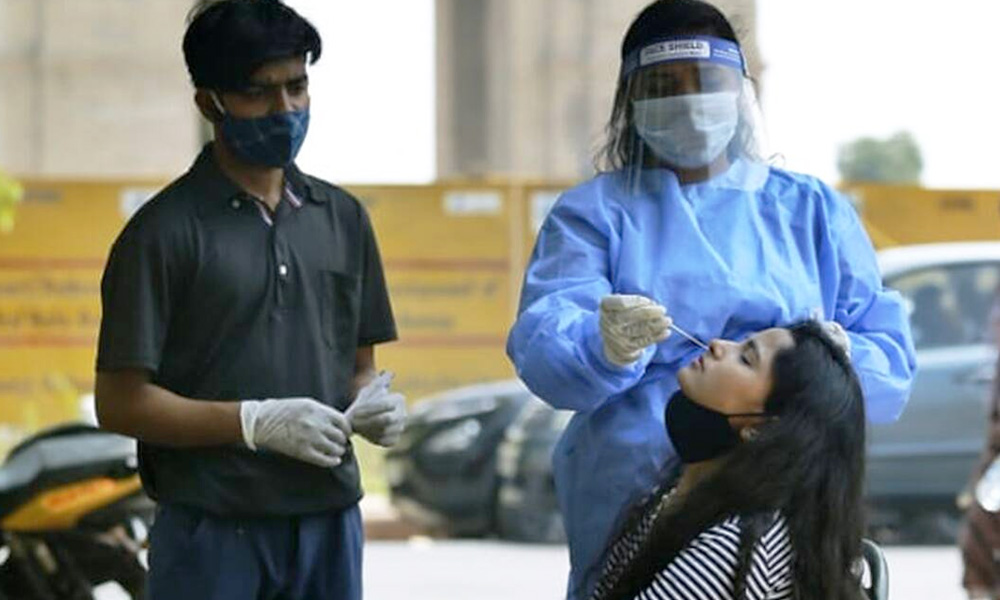
Image Credit: The Indian Express
The Effects Of Various Variants Of The Virus On People's Health
India, 22 Jun 2021 5:39 AM GMT
Creatives : Prattusa Mallik |
A student of Journalism and Audio-Visual Communication, interested in words and silences alike, I aim to bring the narratives of the periphery to the centre, one story at a time. When not working, I'm usually caught reading, thinking, writing, watching Friends, or stargazing.
Mutations and consequent emergence of new variants are quite natural amongst viruses and it is something that scientists know. Sometimes the variants are weaker and perish without causing any infection, but sometimes they are more robust and cause clinically significant diseases.
Ever since coronavirus struck the world last year, I think it has never given us a dull moment. Earlier, the conversation was about deciphering the genome, clinical conditions, behaviour, and treatment. Eventually the discussion progressed to going back to life with the 'new normal', vaccine development, and achieving mass herd immunity. Then, earlier in 2021, we started getting reports of patients whose clinical conditions were unusual and clustering of such cases in the UK and South Africa. Now, in middle of 2021, there are many variants reported and still evolving, which makes us ask the question– What will the impact of these variants be on our health and this worldwide vaccination drive?
The first thing to know is that the mutations and consequent emergence of new variants are quite natural amongst viruses and it is something that scientists know. Sometimes the variants are weaker and perish without causing any infection, but sometimes they are more robust and cause clinically significant diseases. The World Health Organization carries out surveillance and traces the reported cases to look for trends and mutations. The variants are then categorised into Variants of interest (VOI) and Variants of concern (VOC).
Variants of Interest | Variants of Concern |
Characteristics | Specific genetic marker with possible association with increased infection and/or severe diseases and non-responder to standard treatment and vaccine | A variant for which there is evidence of an increase in transmissibility, more severe disease, poor response to vaccination, reduced effectiveness of treatments, or diagnostic detection failures. |
Variants identified | B.1.525, B.1.526, B.1.526.1, B.1.617, B.1.617.1, B.1.617.2, B.1.617.3, P.2, P.3 etc | B.1.1.7, B.1.351, P.1, B.1.617.2 |
| Public health implication | Active sequence surveillance to see how easily the virus can spread, the severity of disease, the effect of treatment and current vaccine available. | Notification to authorities, reporting to CDC, efforts to control spread, increased testing, research to determine the effectiveness of vaccines and treatments against the variant. If needed, development of new vaccine or modification of current vaccines. |
Variants Of Concern
| Variants | WHO name | Earliest samples identified | Clinical implications | Vaccine implication |
B.1.1.7 | Alpha | UK, September 2020 | 50% increased transmission, increased severity | No impact of vaccine effectiveness |
B.1.351 | Beta | South Africa, May 2020 | B.1.351 50% increased transmission, reduced susceptibility to the combination of bamlanivimab and etesevimab monoclonal antibody treatment, but other EUA monoclonal antibody treatments are available
| Reduced neutralisation by convalescent and post-vaccination sera
Some protection provided |
P.1 | Gamma | Japan/ Brazil, November 2020 | Significantly reduced susceptibility to the combination of bamlanivimab and etesevimab monoclonal antibody treatment, but other EUA monoclonal antibody treatments are available | Reduced neutralisation by convalescent and post-vaccination sera
Some protection provided |
B.1.617.2 | Delta | India, May 2021 | 40% more transmissible, severe diseases | Reduced vaccine efficacy as per the preliminary data |
So, while we know the emergence of new variants is inevitable and that can have an impact on health, treatment, and vaccination, below are a few take-home messages:
1. Isolating patients and positive cases remain of utmost importance. Irrespective of the virus variant, controlling spread is critical.
2. Wearing masks, washing hands, social distancing is here to stay and is the 'new normal'.
3. Aggressive vaccination drives with the currently available vaccines must continue and people should take them.
4. Newer vaccines must incorporate the new strains, as and when more data is available.
5. Booster shots may be needed eventually based on the evolution of clinically significant strains and severity.
6. In the future, we may be getting swab reports with a particular strain mentioned and the treatment option offered will be based on the same.
 All section
All section














